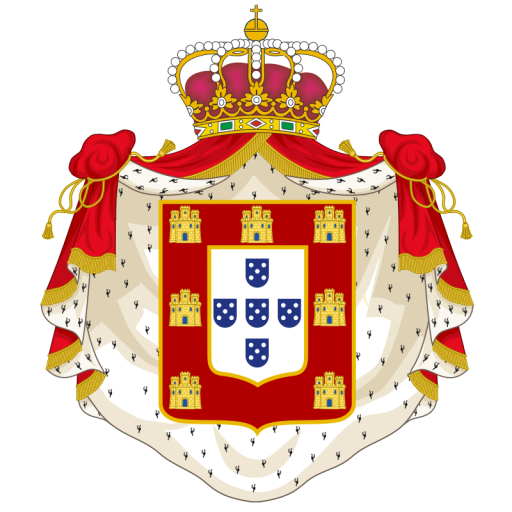Since the Dinasty of Bragança, and throughout the lifetime of the monarchy, Royal Family means only the King, the Queen and their children, namely those to whom the title of Prince or “Infante” belonged. The title of Prince belonged to the crown successor, and to his firstborn son who was legitimate, is understood by “legitimate marriage”. The Crown’s successor had the title of Prince of Brazil, which was later replaced by that of Royal Prince. To the firstborn son of the Royal Prince belongs the title of Prince of Beira. The title of Infante, according to the Law of 16 September 1597, belongs to the legitimate sons and daughters of the King, except the successor of the crown; the grandchildren and granddaughters of the King (sons of the crown’s successor, who are legitimate and not entitled to be Prince), and the legitimate brothers and sisters of the King.
The hereditary honors and forms of address (styles) that are due to the Royal Persons are consigned in several diplomas and legislation that were in force until the end of the monarchy. The treatment of the King (and Queen) is that of Majesty – His Majesty (HM), to which was added later, by Pope Benedict XIV’s concession to King D. João V and his Successors, the title of Rei Fidelíssimo (Faithful King), designating itself from then on by Majestade Fidelíssima – SMF (Your Faithful Majesty – YFM). The treatment of Royal Prince and Prínce of Beira is that of Alteza Real – SAR (His/Her Royal Highness), and Infantes (and Infantas) that of Alteza –SA (His/Her Highness) or Alteza Sereníssima – SAS (His/Her Most Serene Highness) to which the generic treatment of Most Serene, used by all Royal Persons (Dynasties of Royal House of Portugal),namely the members of the Most Serenne House and Dynasty of Bragança. With regard to the inherent honors that assist Royal Persons, the highlights are, among others, that of being effective Grand Cross of the Military Order of NS da Conceição of Vila Viçosa, and the privilege of using the Arms of Portugal, when Princes or Infantes, with a royal crown and differenced with a label of three points,, as per the custom, and the place they occupied in the Succession of the Crown of Portugal.
The precedence between Royal Persons is made according to the proximity of their right to the Succession of the Crown, based on Portuguese law, contained in the old laws of the Kingdom (called Cortes de Lamego, or Fundamental Laws of the Kingdom), enshrined later in the Constitutional Charter of the Portuguese Monarchy, transmitting by legitimate line “according to the regular order of Primogeniture, and representation, always preferring the line before the later ones; along the same line, the degree closest to the most remote; in the same degree, male to female; in the same sex, the oldest person to the youngest ”, further it determined that the Princess Heiress could only marry Portuguese, having for this the essential royal authorization, and excluding foreigners (even if naturalized), bastards (even legitimated) and the “Princesses married to foreigners and their descendants”.
